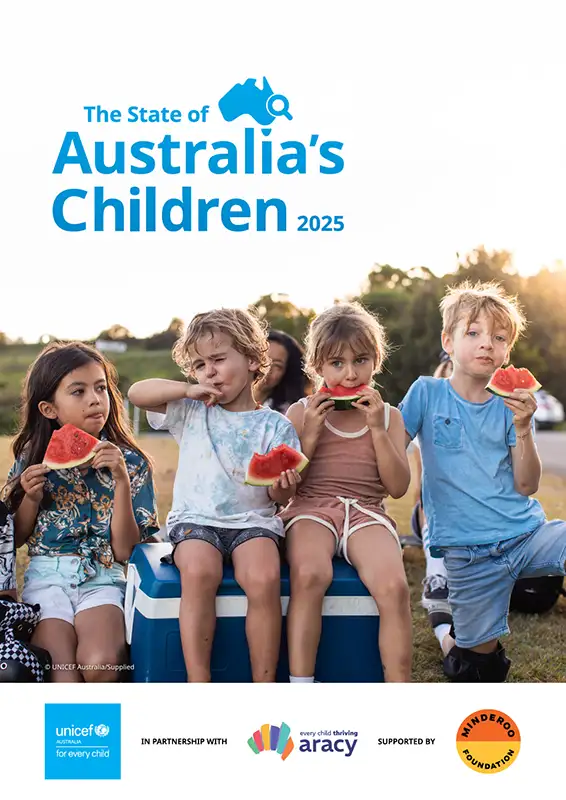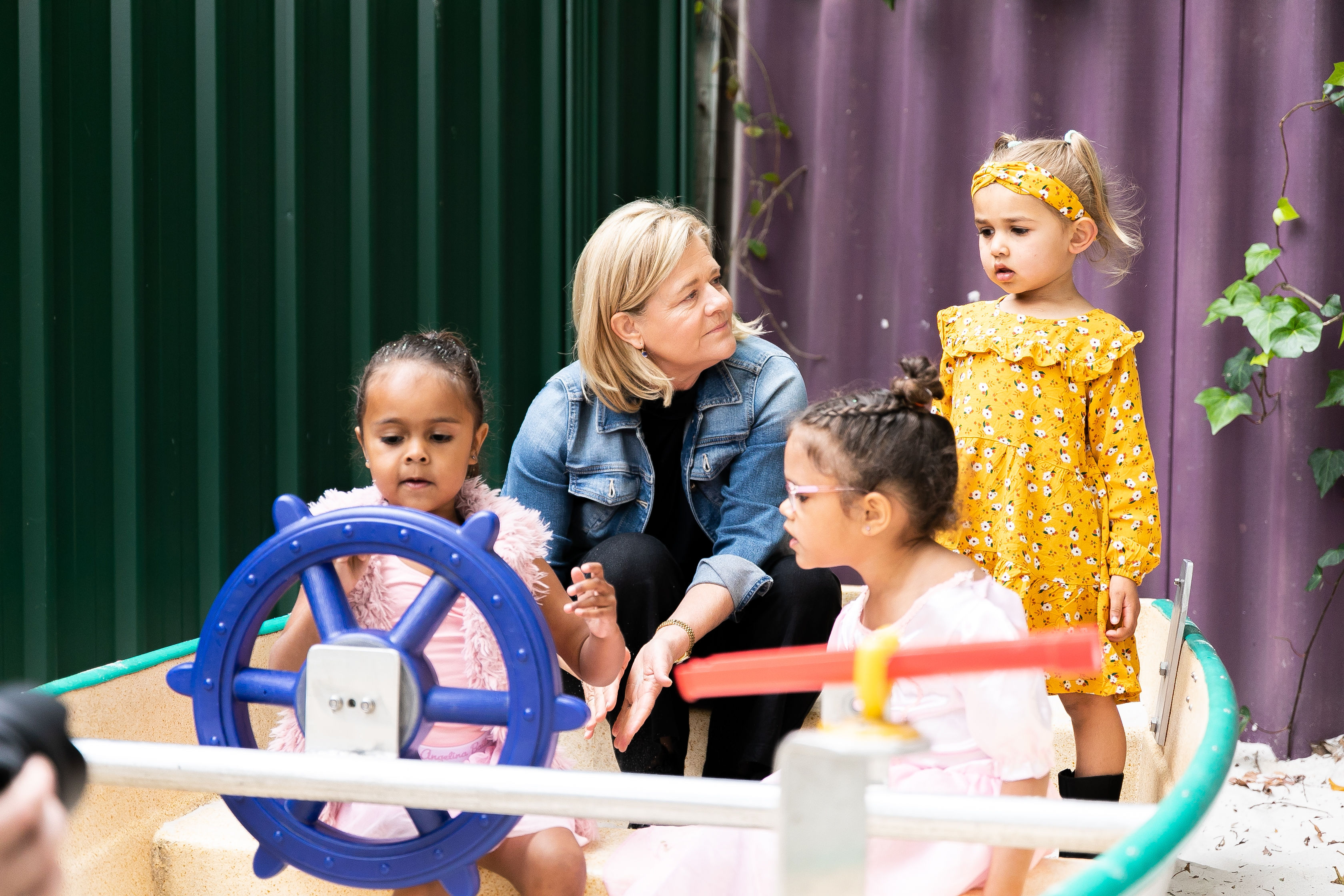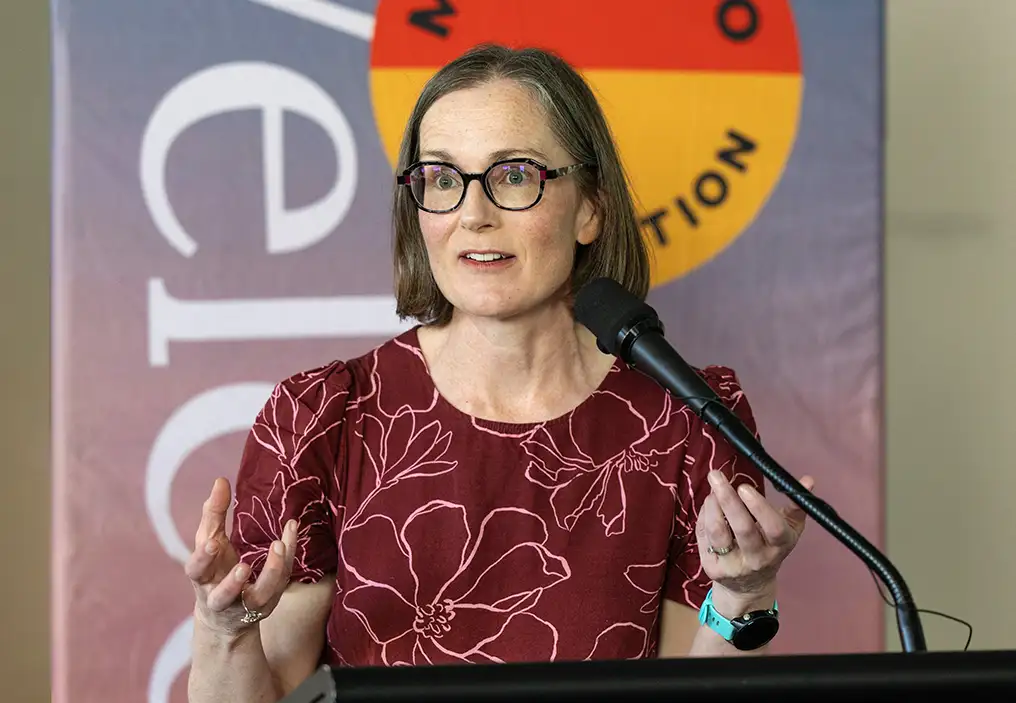The early years shape everything that follows. When children have what they need to thrive, the benefits ripple across families, communities and generations.
But new national data shows the wellbeing of Australia’s children is at a crossroads, with many doing well but too many starting school already behind, and too many young people struggling with their mental health and worried about the future.
Developed by UNICEF Australia and the Australian Research Alliance for Children and Youth (ARACY), and supported by Minderoo Foundation, The State of Australia’s Children report brings together more than 100 national datasets and the voices of over 2,000 children and young people. It provides the most comprehensive picture yet of how children are faring and what needs to change.
Across six domains of wellbeing – being valued, loved and safe, having material basics, being healthy, learning, participating, and having a positive sense of identity and culture – the report paints a clear picture of challenges that are both widespread and interconnected.
52.9%
Only 52.9 per cent of children are arriving developmentally on track for school, the highest level of vulnerability since 2009.
33.9%
For Aboriginal and Torres Strait Islander children, that figure drops to 33.9 per cent, and they make up 41 per cent of children in out-of-home care.
20.2%
One in five young adults (20.2 per cent) report high psychological distress, and suicide remains the leading cause of death for 15–24-year-olds.
49%
Nearly half (49 per cent) of 16–17-year-olds say housing and financial stress are their biggest concerns, and less than a third feel very excited and hopeful about the next five years.
-19%
Connection is declining: peer connection has dropped 19 percentage points since 2020, and family connection has fallen 13.
Behind every number is a child and a family navigating complex and overlapping pressures.
A defining feature of the report is its inclusion of children’s own perspectives. Through drawings, stories, workshops and surveys, more than 2,000 children and young people shared what makes them feel safe, hopeful and connected.
Their reflections deepen the data. They remind us that wellbeing is not just a set of statistics; it is about how children experience the systems designed for them. As one participant put it, “It’s easier to be brave when someone listens.”
The evidence is clear: acting early is smarter, fairer and more effective than responding once problems escalate.
The Cost of Late Intervention research estimated that Australia spends $22.3 billion every year responding to crises that earlier action could have prevented.
The State of Australia’s Children report shows the lived reality behind those numbers.
When the right supports are in place in the first years of life, children start school ready to learn, families are more resilient and communities flourish. Early investment is nation-building, delivering better outcomes for children and long-term savings for society.
The findings from the Cost of Late Intervention strengthen long-standing calls for coordinated, long-term reform across early childhood, health, education and family services.
They echo recommendations from Thrive by Five, including establishing a National Early Years Commission to provide leadership, accountability and alignment across systems.
This is what it means to put children at the centre, to design policies and services around their real needs, and to use evidence to drive change that lasts.
Minderoo exists to forge a fair future, and that future begins with children.
The State of Australia’s Children report reinforces what we know to be true: when children do well, communities do well.
By combining evidence with lived experience, elevating children’s voices, and working alongside partners across sectors, we can create the kind of systems that help every child thrive, not just survive.
- Nicola Forrest

The State of Australia’s Children
Developed by UNICEF Australia in partnership with Australian Research Alliance for Children and Youth (ARACY) and supported by Minderoo Foundation, the report takes a comprehensive look at the wellbeing of children and youth across the nation.
Enriching the latest publicly available data with the perspectives of Australia's children and young people, The State of Australia’s Children report is a holistic view of how the country’s youth are faring.



